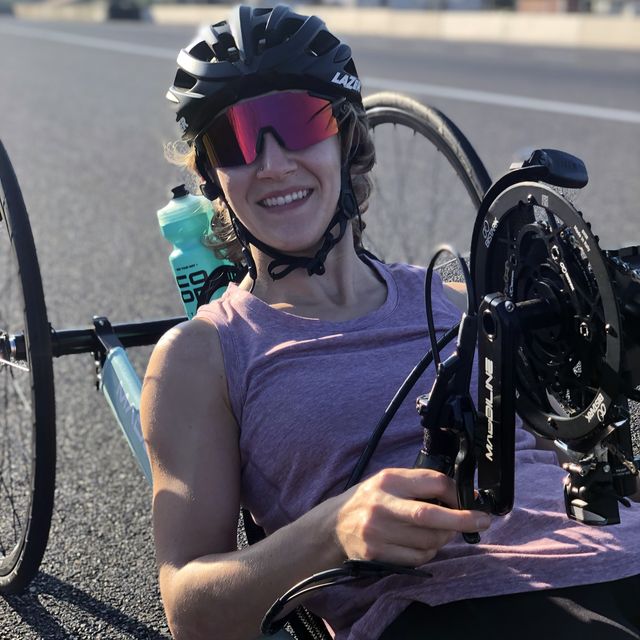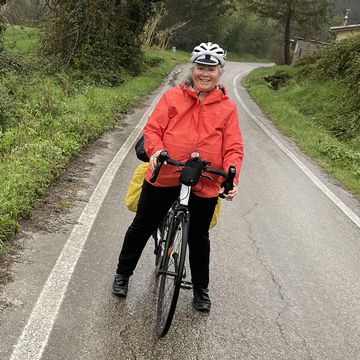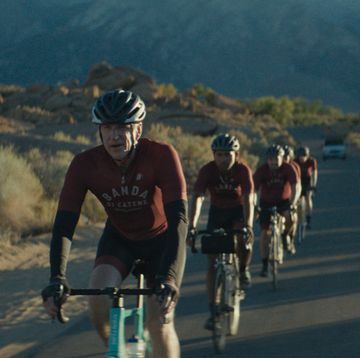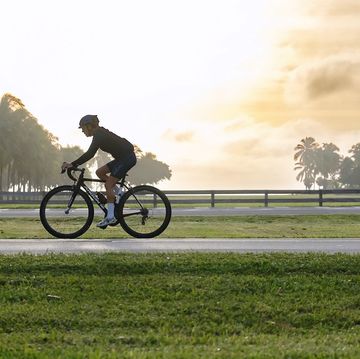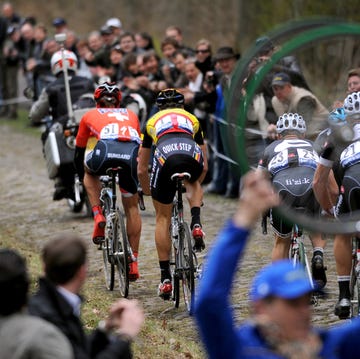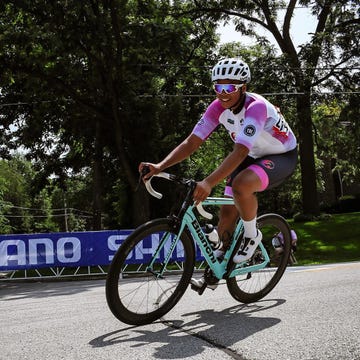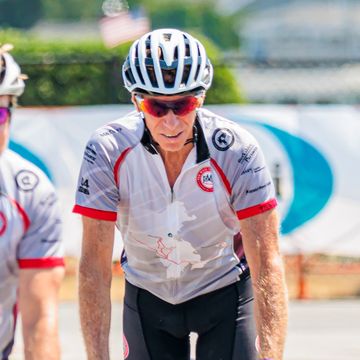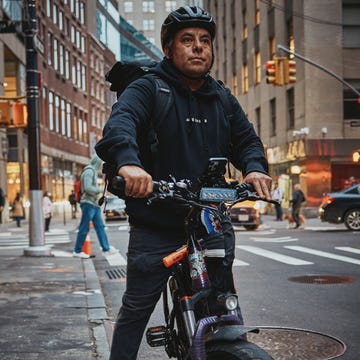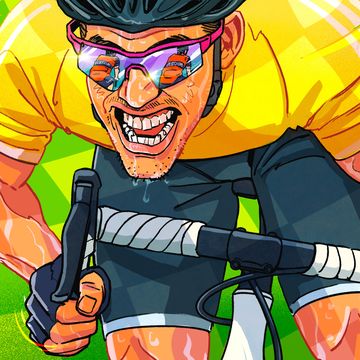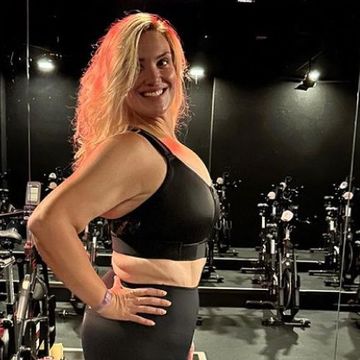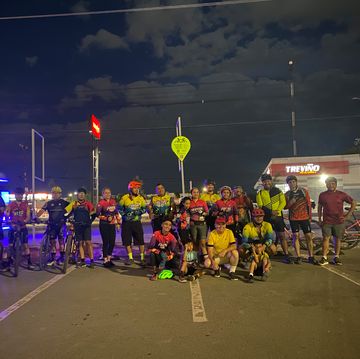Name: Lizzy Ragan
Age: 30
Hometown: Beavercreek, Oregon
Occupation: Clinical Research Management, Infectious Diseases
Time Cycling: 14 years
Reason for Cycling: Cycling is utilitarian in the sense that it gets you from point A to B, but you can also cover incredible distances, see amazing things, and there’s something truly magical when you find that flow and become one with your bike.
I bought my first “real” bike when I was 16—it was a Frankenstein of different used and new parts slapped onto an entry-level cross frame, and it was perfect. The rest is sort of history. Cycling has been a part of my life ever since, whether it was commuting, long countryside road rides, gravel grinders, or occasionally getting dragged out onto mountain bike trails. My bike commute was around 14 miles each way to work, and right before my accident, I was clocking around 140 miles a week. Most days, I was on two wheels for one reason or another.
But on August 24, 2019, my life changed. I was rock climbing with a friend up in New Hampshire, and I took a ground fall. I fractured numerous cervical vertebrae (including C1 and C2) and did substantial damage to my spinal cord in the T4-6 region of my thoracic spine. At this stage, I’m considered a complete paraplegic and have very minimal function or sensation below my sternum. There’s no expectation this will change without monumental scientific advancement, so life now is about adaptation and finding a “new normal.”
My recovery was long and exhausting. I spent two initial weeks in the ICU following a spinal fusion of my upper thoracic spine at Dartmouth Medical Center, which was quite the whirlwind. From there, I was transferred to Spaulding Rehab Hospital in Boston—where I lived at the time—where I spent around two months in acute inpatient rehab. This involved physical and occupational therapy six days a week—I had to re-learn how to sit upright and not fall over, and I slowly worked my way toward the skills that ultimately allow me to be independent today.
I continued with weekly outpatient rehab up until COVID-19 shut Boston down in March 2020, then it all came to a screeching halt. At that point, however, I was starting to plateau in what physical therapy could offer, so it ended up being an abrupt but reasonable shove-the-baby-bird-out-of-the-nest moment. As somebody who has always been about hyper-efficiency and productivity, figuring out how to slow down a bit has been a very steep learning curve.
Now, my cycling takes the shape of handcycling. The reality of my injury set in within minutes after my fall, and I quickly shifted my focus to what I had to look forward to. I knew cycling as one of the most adaptive sports, so it gave me a lot of hope. Due to restrictions from my cervical spine fractures, it took a while to be cleared for sports from my surgeon, but by early summer 2020, I was rolling. It was pure joy, and I’m thankful to now call handcycling a regular part of my life.
Finding the right handcycle is so, so difficult. The fact is, they’re super expensive pieces of equipment and often custom-built with each order—this can cost anywhere from $5,000 to $12,000. That’s to say, it’s really hard to find all of the different models to try out before you buy. There’s no brick-and-mortar adaptive cycling store that you can just walk into and give them all a go. In the end, I actually didn’t get to try the handcycle models I went with ahead of time, but I was able to take comparable competitor models for a spin, and thus get a sense for what I wanted.
Lizzy’s Must-Have Gear
→ CustomWool Cycling Cap With Ear Flaps: This has been my favorite cycling cap for so many years. It’s lightweight, breathable, comfortable, and has, so far, stood the test of time.
→ Nuun Hydration Tablets: These clean, easy-drinking electrolytes without any additives have been my go-to for hydration basically since they came on the market.
→ Lazer Road Helmet: Nothing causes a hot spot faster than having an adjustment dial between the back of your head and handcycle headrest. With the adjustment system on the top of the helmet, Lazer helmets eliminate this problem.
→ Volleyball Knee Pads: With adaptive mountain bikes (Lasher, Maddiline-type models with feet-first), you’re doing a ton of thrashing about, and my knees have historically taken a serious beating against the frame. Volleyball knee pads eliminated this problem and have been such a great hack.
I recently moved to Oregon, and I try to get out a couple times a week, often on gravel roads. Oregon country roads are nothing like their New England counterparts— they lack any semblance of a shoulder, so longer rides require a drive. I’m looking forward to potentially moving to a more cycling-friendly town early next year, and starting to put some half- and full marathons on my calendar.
I also get out pretty regularly on my off-road handcycle, and I have enjoyed the access into the outdoors it enables. There’s a small—but growing community—of adaptive mountain bikers in the Portland area, and we’re all really motivated to work with local organizations to promote more trail building focused on accessibility.
Handcycling is everything for me that cycling was before my injury. It’s the freedom to cover incredible terrain and distance by the power of your own body. In so many ways it’s even more exhilarating now than it was before I was paralyzed. My ability to move freely is so limited by my wheelchair, and a handcycle, particularly the new classes of off-road handcycles, truly open the world up again.
As somebody who has always been active, it’s been so critical to my own personal recovery to find that outlet again, even if it takes a different shape. Never underestimate the healing power that sports and activity can have in your life, regardless of what you’re going through. When you’re in the thick of it and all you want to do is curl up in the fetal position, there’s rarely a better medicine than getting out and moving your body. It’s counterintuitive, but we all know it to be true.
For those looking to get into adaptive cycling, local adaptive sports organizations are often an incredible entry point, and they often have equipment they’re willing to loan out for periods of time. It’s a great way to learn more if it’s right for you.
There are a number of truly incredible adaptive sports organizations out there that help make prohibitively expensive handcycles a reality for adaptive athletes. The Kelly Brush Foundation (KBF) is one that I feel particularly connected with. If my story has at all inspired you, I would encourage you to consider supporting an adaptive sports organization like KBF to help others with disabilities experience the power of adaptive cycling.
We want to hear how cycling changed you! Send your story and submit your photos to us via this web form. We’ll pick one each week to highlight on the site.
Emily Shiffer has worked as a writer for over 10 years, covering everything from health and wellness to entertainment and celebrities. She previously was on staff at SUCCESS, Men's Health, and Prevention magazines. Her freelance writing has been featured in Women's Health, Runner's World, PEOPLE, and more. Emily is a graduate of Northwestern University, where she majored in magazine journalism at the Medill School of Journalism and minored in musicology. Currently residing in Charleston, South Carolina, Emily enjoys instructing barre, surfing, and long walks on the beach with her miniature Dachshund, Gertrude.
